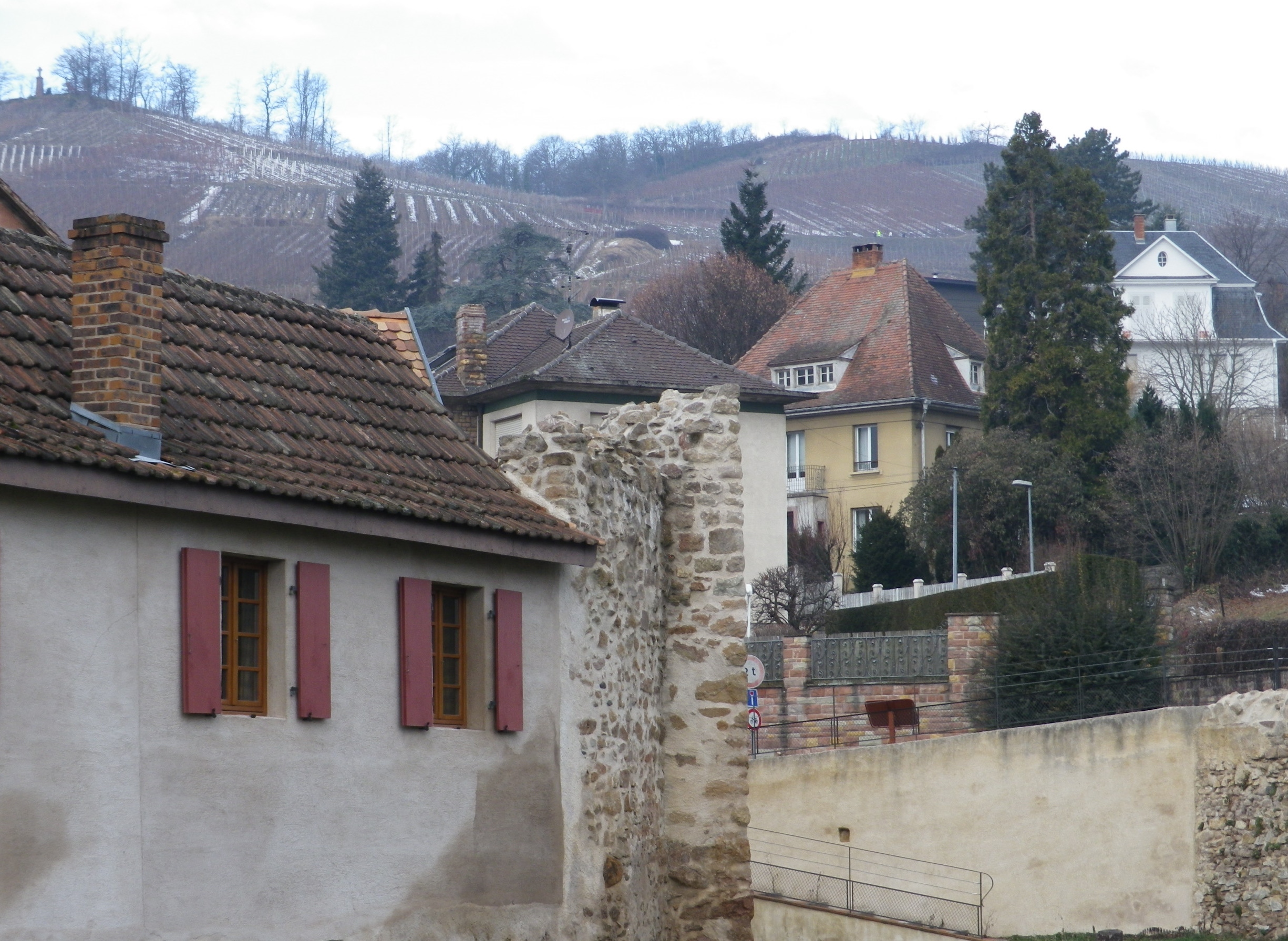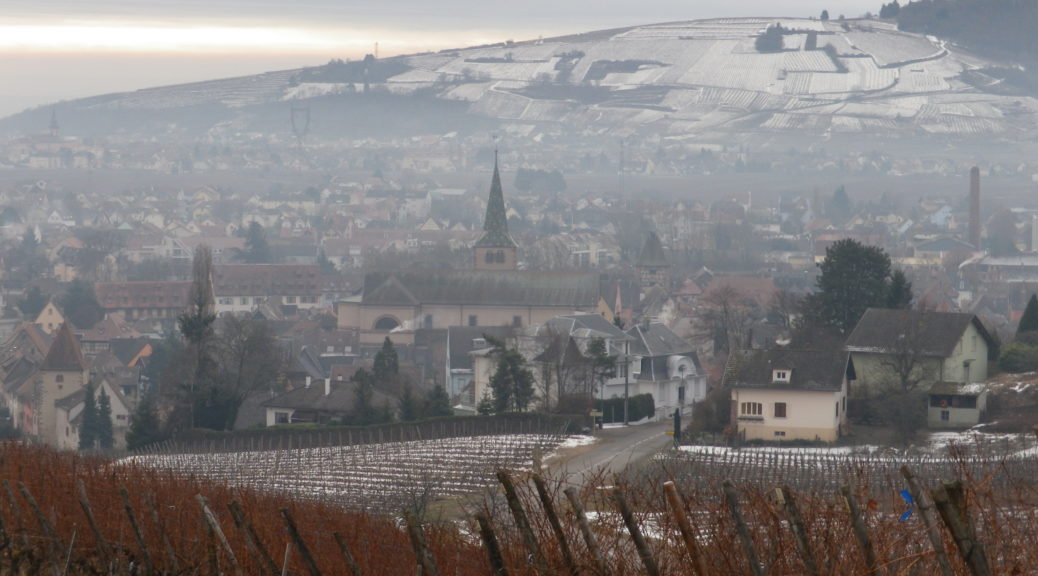Now encircled by stout walls, in the distant past the lands of Turckheim once faced a threat from a fierce foe – a dragon. Ultimately vanquished, the dragon’s blood spilled on the side of a hill, where its warmth and power rendered that soil very fruitful. Thus, both the town and its legend nowadays serve its tourism as well as its wine industry.
Turckheim is a compact town, running along the bank of a small river. Its walls back against the very hillside that has brought it fame in the wine world: The Brand. Rugged, covered in vines and topped by pines, it is very picturesque; as is the old town center, with its walls, gate towers and half-timbered houses. Fortunately, a hike dedicated to the town’s wines from its most famous cru, is available as well.
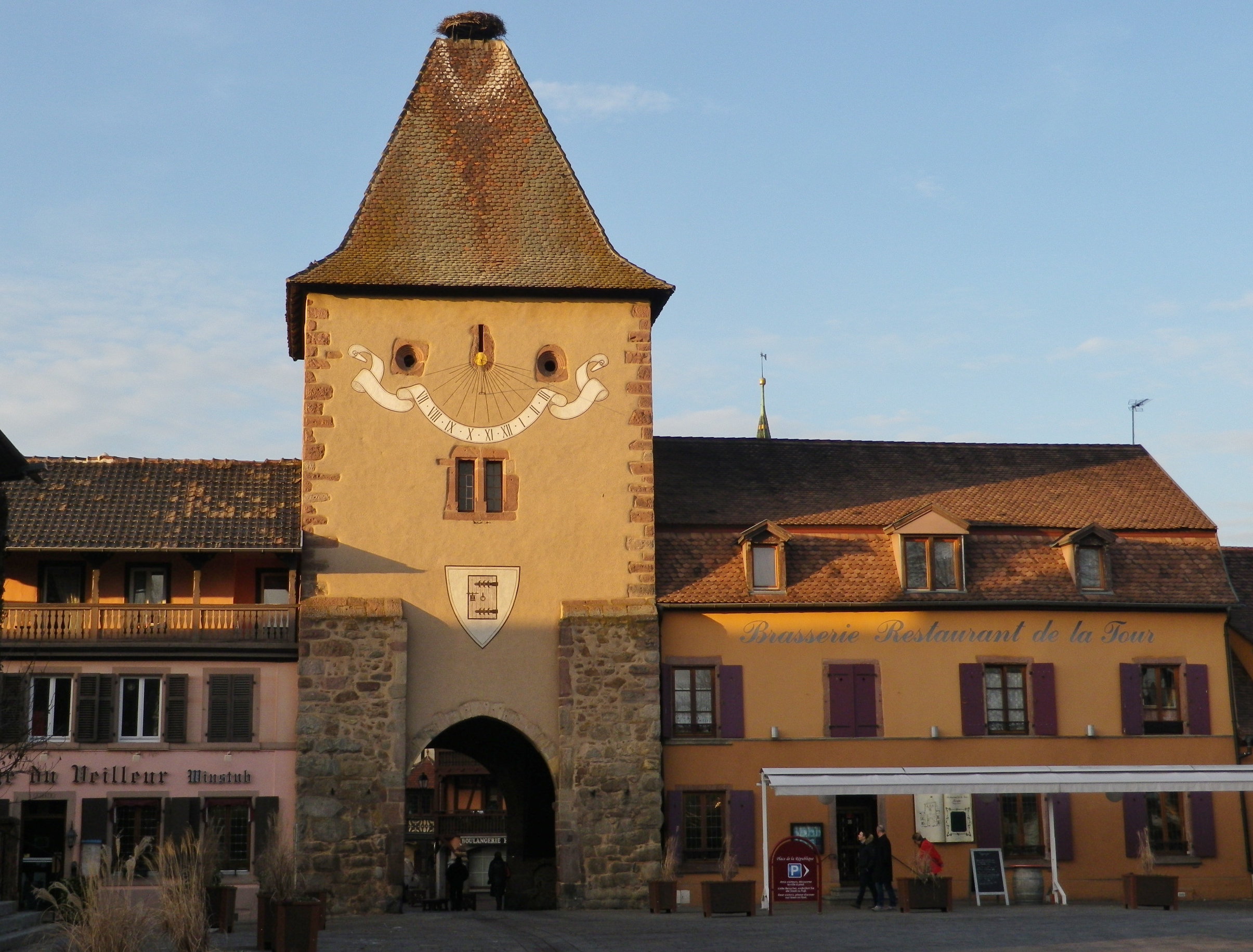
One delightful aspect of this hike was its variety. It began (and ended) in the old town center, exiting through the Munster Gate, an imposing piece of architecture set in the walls at the eastern edge of town. It headed directly toward the wine cooperative, the Cave de Turckheim. From the gate tower, the winery is only about 400 meters away. A group of hikers just ahead of me made the detour to it, and I never saw them again.
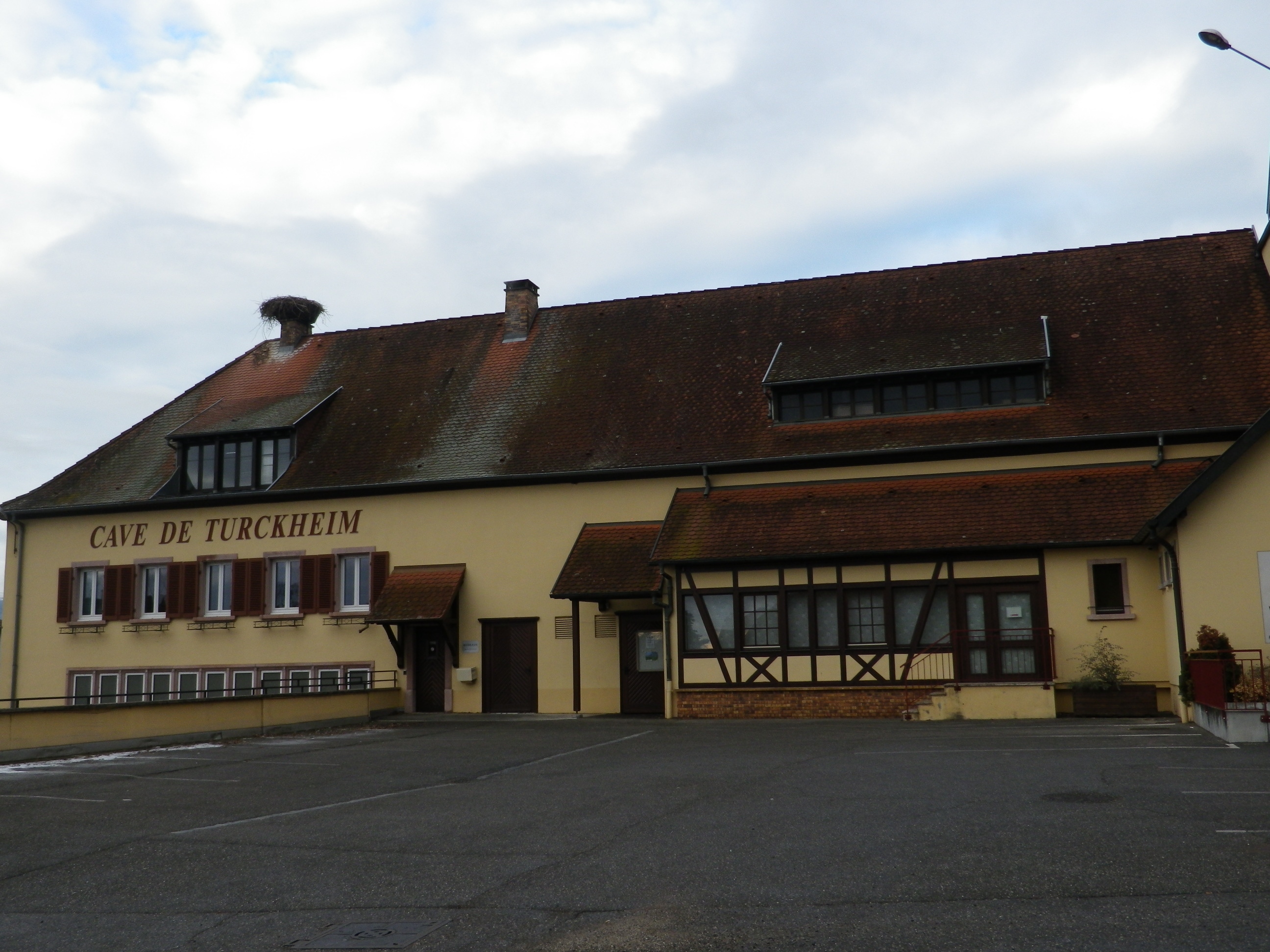
The trail began to climb, and entered woods shortly thereafter. Clearly a popular path, even in winter, there were benches, explanation boards and lookouts along the way up. The enchanting quiet of a winter wood set in, as the inclination increased. In summer, there would be a welcome coolness and shade. In either season, hikers arrive in the proper mood at a small chapel dedicated to Saint Wendelin.
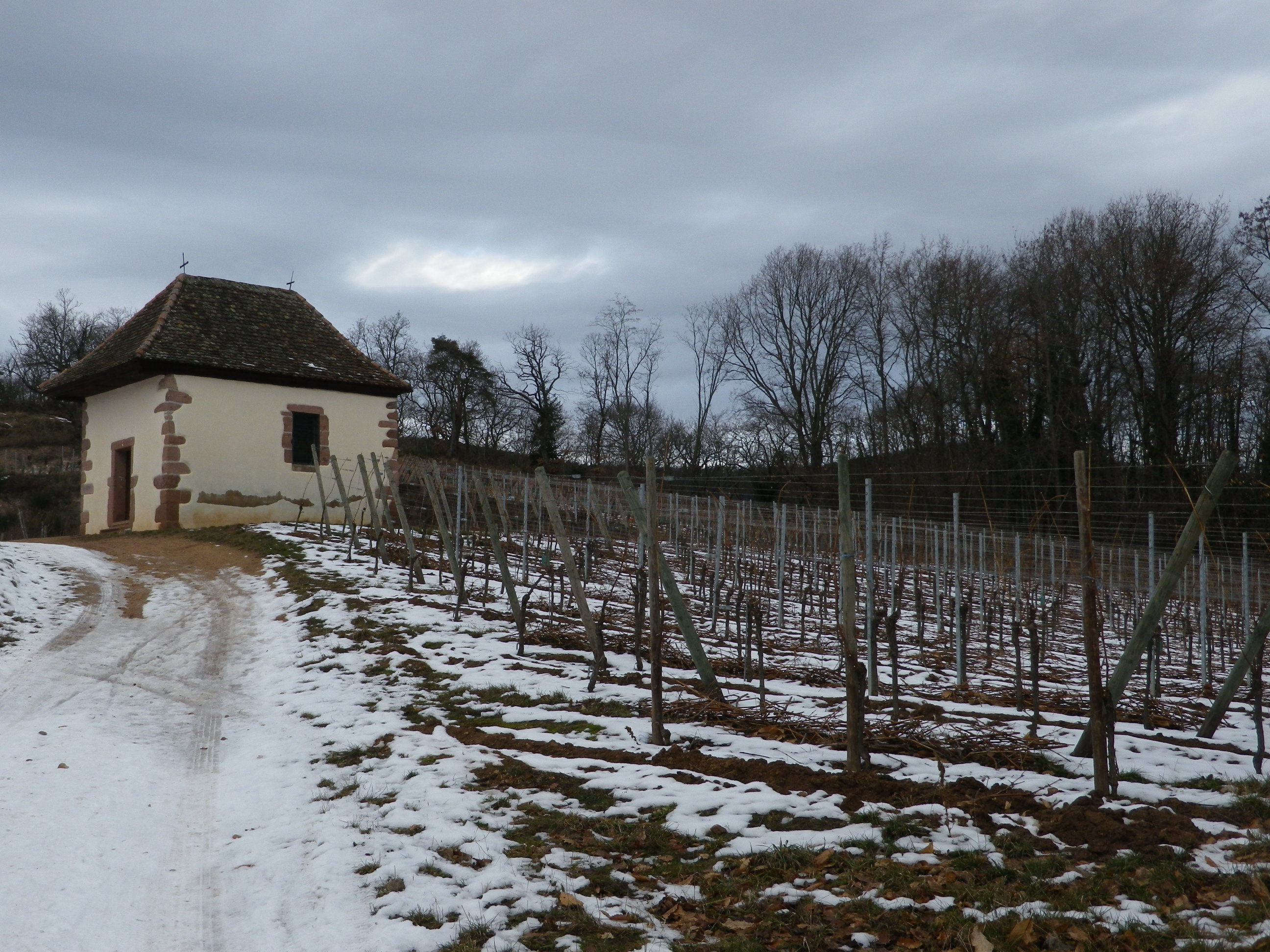
As a solitary hiker atop the ridge that day, the world seemed far away. Niedermorschwihr was not yet visible, and Turckheim was out of sight. Yet the panorama stretched far and wide – east, across the Rhine Valley to Germany, and south. West though, I could see only the trees covering the Vosges Mountains. Serious mountain trail hiking begins here, where hikers can climb for days.
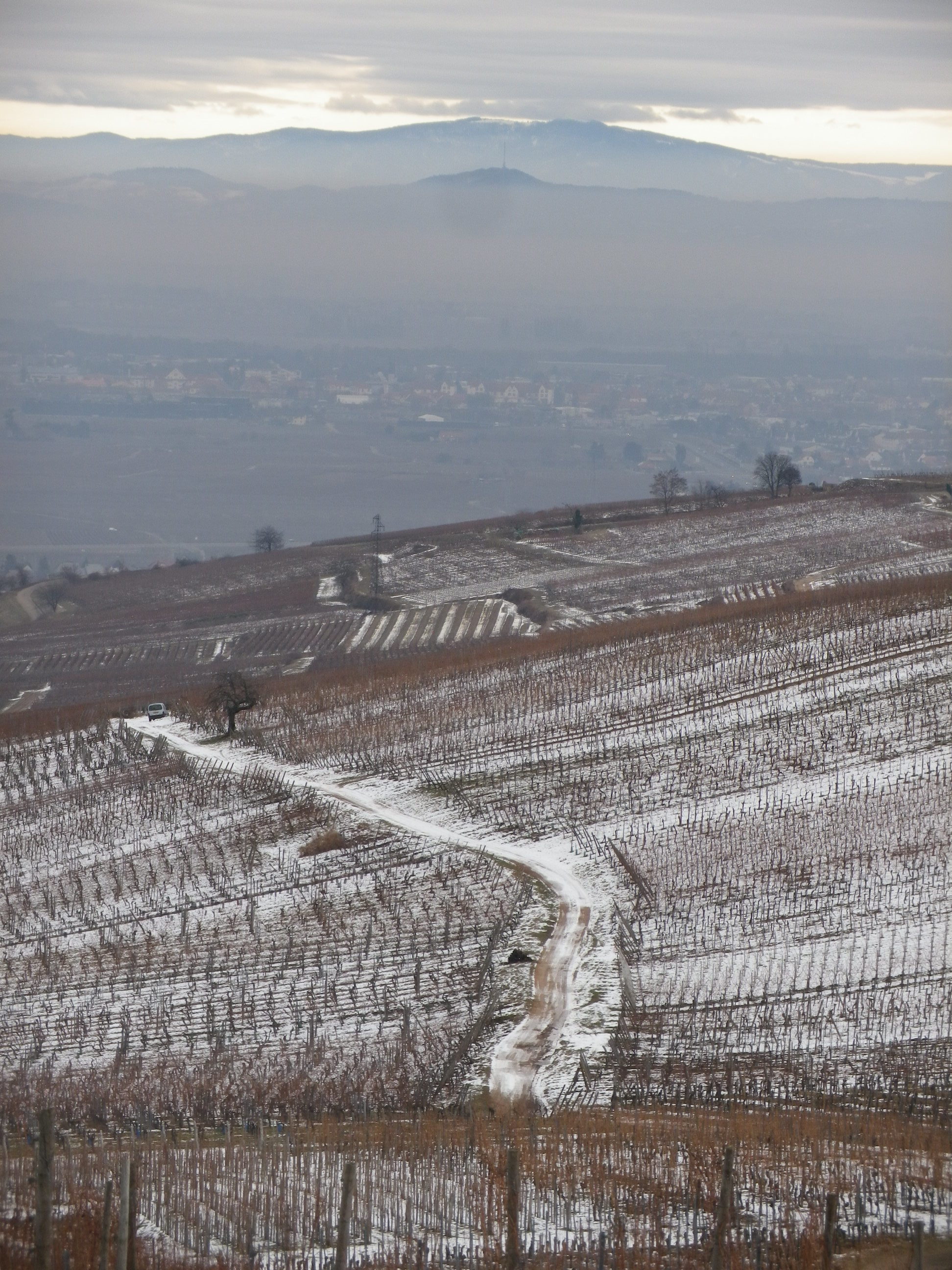
From there to Niedermorschwihr is all downhill. It is a hike through vineyards of the village. While the Grand Cru Brand does not extend this far, several vintners from Niedermorschwihr have parcels of vines there, and produce excellent wines as well. Suddenly in the heart of the quiet village, the trail meanders through its narrow streets, and ultimately turns uphill to begin its return leg.
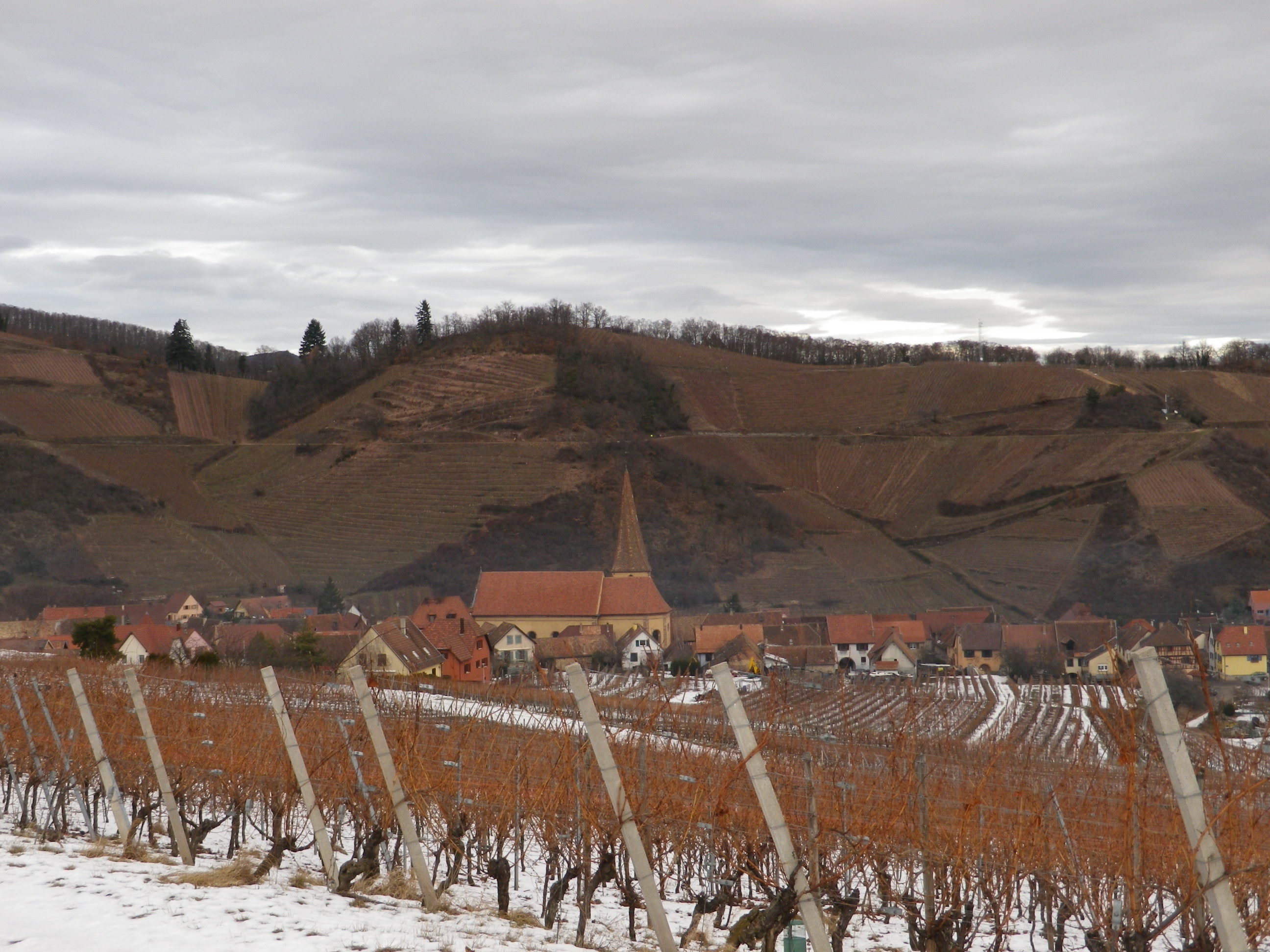
Shortly thereafter the vines of the cru begin. The Brand has a unique appearance at one spot, where the granite rock breaks through the soil, leaving a crumpled appearance to the otherwise straightened rows of vines. It is visually compelling terrain, and this undoubtedly helped to give rise to legends. It inspired me to search for a legendary wine from this cru.
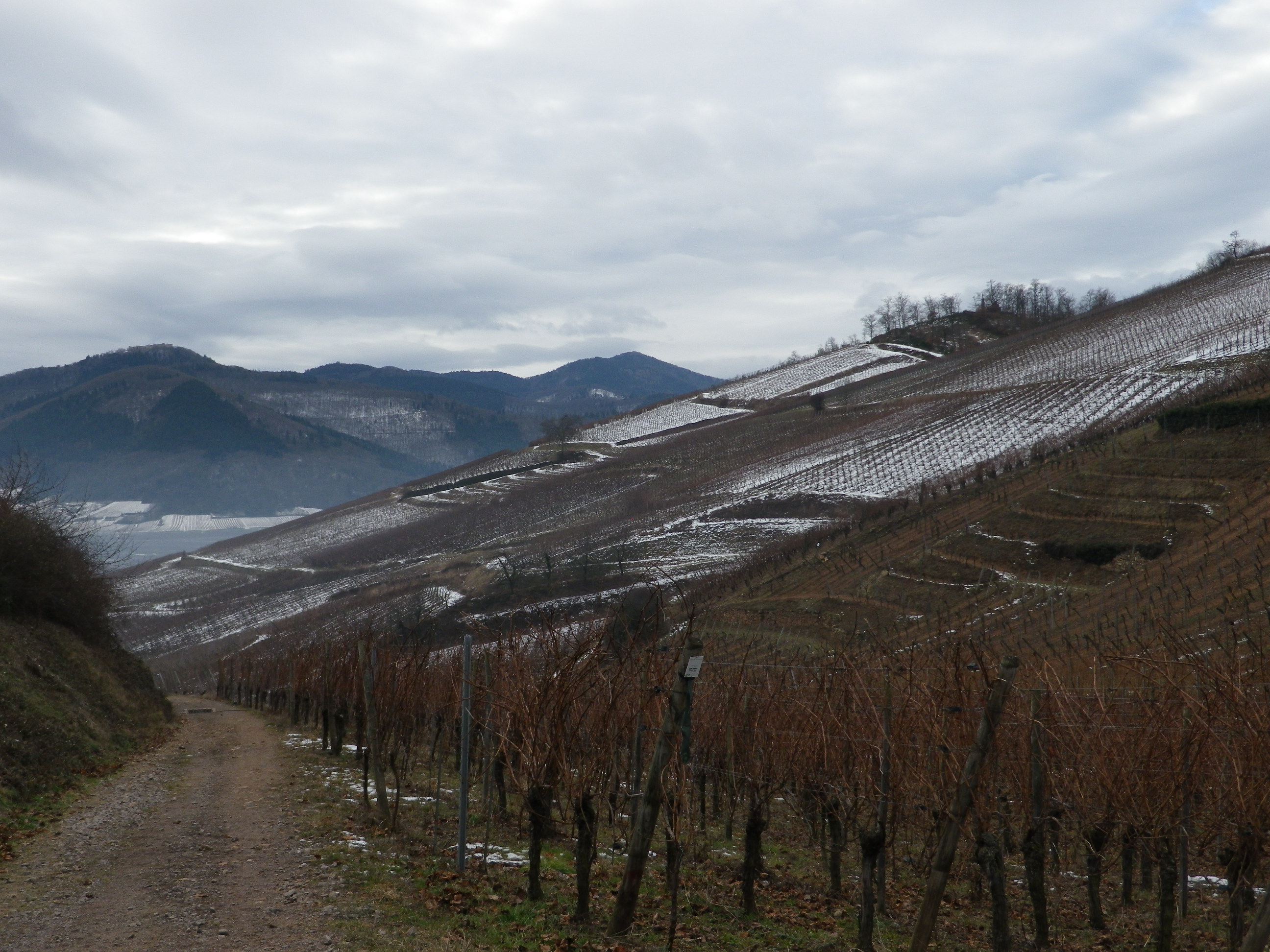
Appropriately, the trail re-entered the town at the Brand Gate. Narrow, and looking quite original, cars still managed to pass through it. Through the gate and back in town, several wineries lined the lanes. In Alsace, most wineries are indeed found in the town center. Here, the vintners, their families, and just as important, their products, remained safe from the predatory attacks not uncommon in the medieval era. Fortunately, a couple were open on a wintery Sunday morning so I could buy a bottle of Grand Cru Brand Riesling to savor some distant day.
